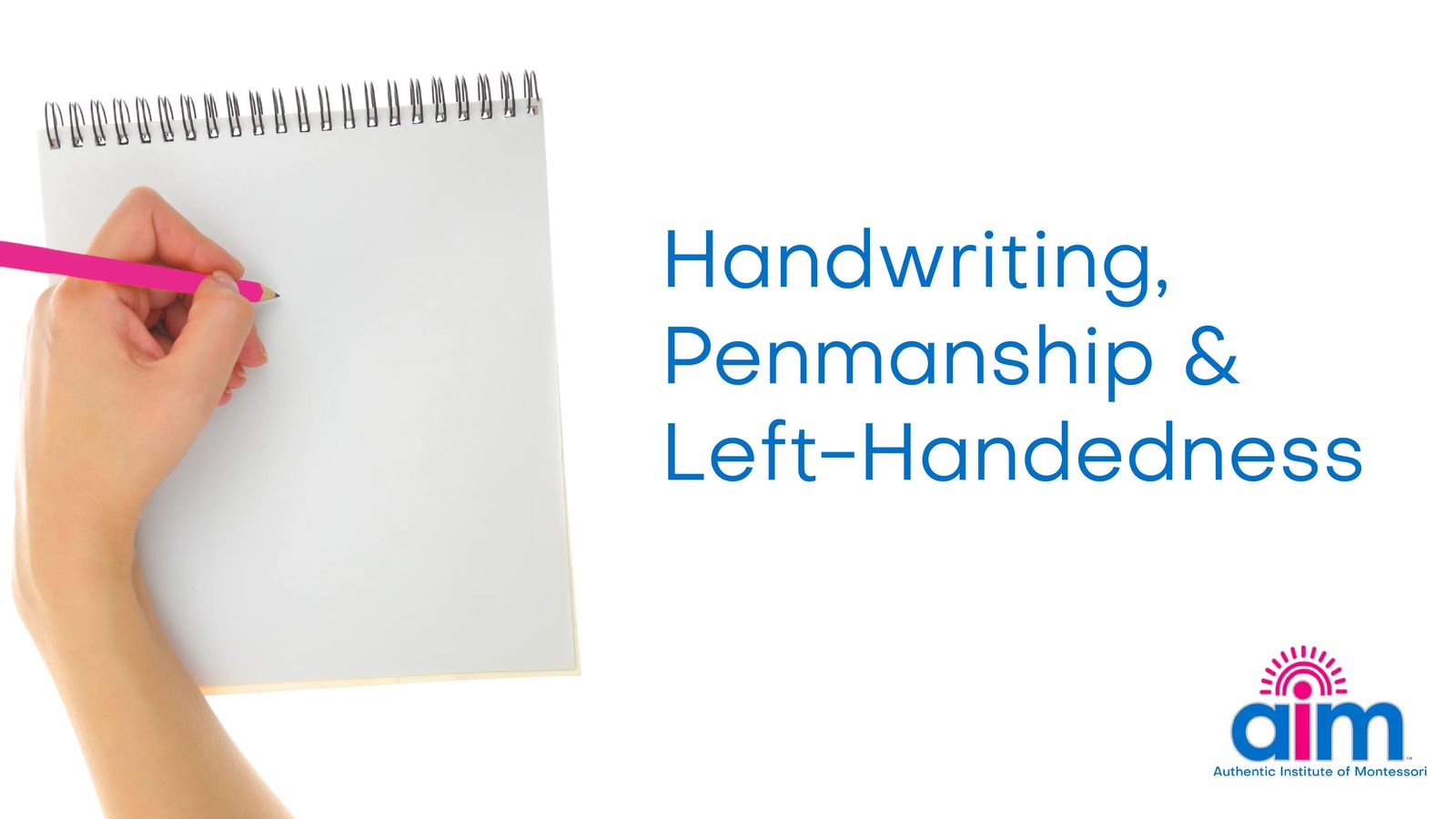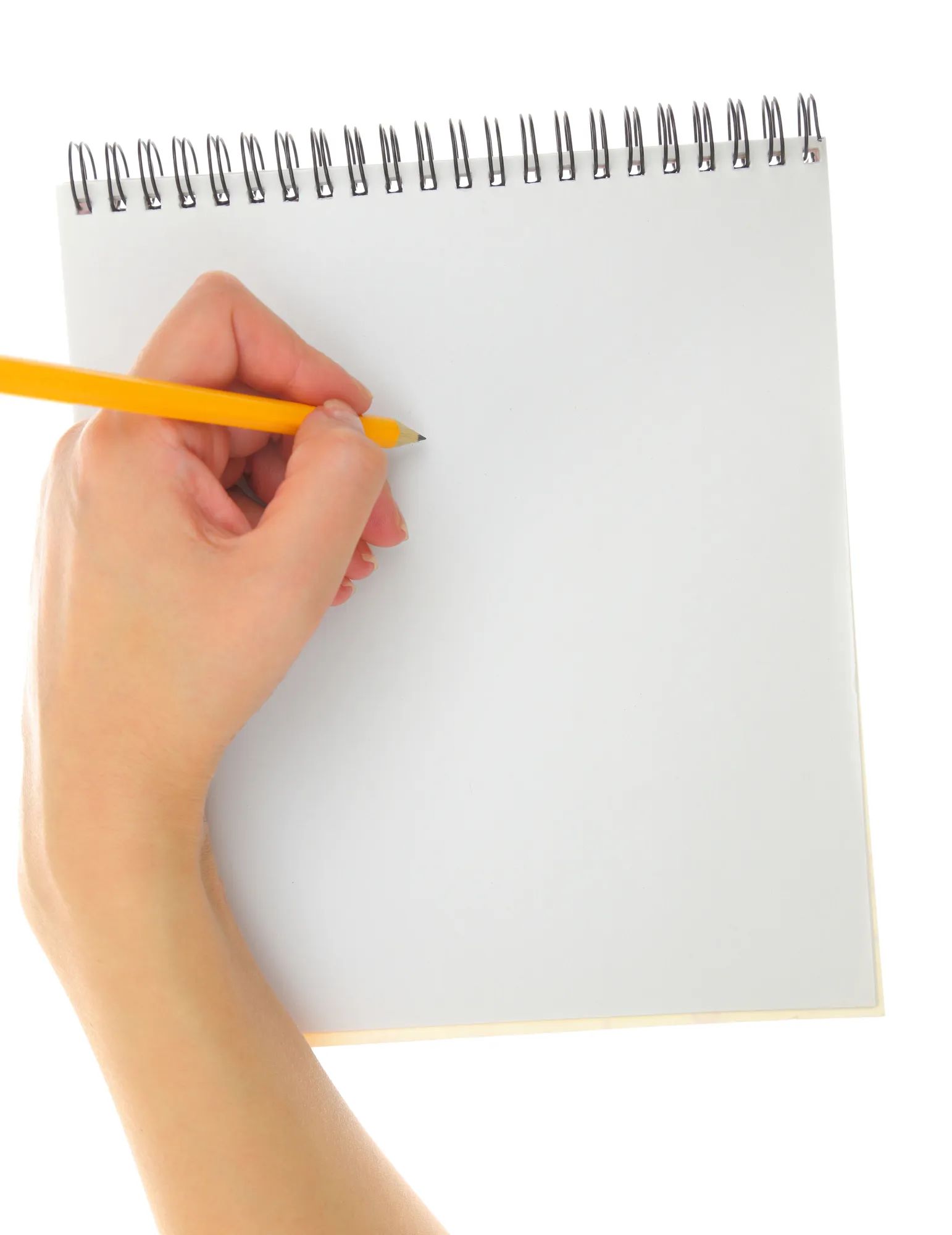Handwriting, Penmanship & Left-Handedness
November 9, 2023

The language avenue is an important foundation in Montessori educational philosophy because it allows children to be able to communicate through both verbal and transcribed words, as well as learning to read and literacy skills.
One aspect of writing that is rarer and often overlooked is the child who is left-handed. Most children and adults do develop a hand dominance. Right-handedness is more common (70-90%) than left-handedness (8-10%). Children usually have a well-developed hand dominance by the time they are five years old and fully developed hand dominance by age six.
Montessori and Writing
In the early stages of writing, we offer a second avenue concurrently- the practical life avenue- in order to focus on fine motor skills and accentuate the “pincer grip” through the lessons of pouring, sponge squeezing, potato peeling and tonging. Then, by observing these activities, we can start to recognize if children are developing their hand dominance.
We also guide children in the proper way to use scissors, hold a pencil and catch a ball. We may assume that most children are right-handed, but for those who are not accommodations need to be made to assure effective and healthy penmanship habits from the very start. If you’ve ever tried to cut using scissors in your left hand, they simply don’t work. Left-handed scissors need to be available in your classroom for those students that do develop left-hand dominance.

“The Hook”
Once you have identified the students who are left-handed, your work has just begun. There is a common habit attributed to left-handed writers and that is “the hook.” You might have observed a left-handed person writing with the hook and may even do it yourself if you have not been taught properly. The photo below shows a left hand dominant person writing with the hook.
The main reason that people- starting with their early childhood years- develop this style of writing is simple. Because they are using their left hand and writing from the left side of a paper to the right side, their hand blocks their sight to the text. By hooking their hand, they have a better line of sight as to what it is that they are putting down on paper. In addition to the unusual position of the hand, developing a hook is not ideal for physical development. Constantly having the hand in this “hook” position can lead to neurological problems down the road- such as carpal tunnel- due to the bundle of nerves in the wrist being squeezed in an abnormal way each time the person writes, draws and paints.
Steps to Teach Proper Technique
Luckily, there is a way that we can teach our left-handers to write with their hand in alignment without blocking their view of text on the paper. We can do this in three simple steps!
- The first step is having the child hold the writing instrument (pencil, pen, marker) 1-1.5” from the point. By doing this, it creates more space between the paper and their hand and gives them a more unobstructed view of what they are doing.
- The second step is showing the child to begin writing by orienting their hand below the line where they are to start their writing. This may seem too low at first, but you will find that once the child starts writing, the text is exactly where it needs be on the line.
- The paper (or whatever medium they are writing on) should be oriented to their body so that the bottom right corner is pointing to their midline at an angle that results in the arm being a right-angle to the bottom edge of the paper and wrist straight (see diagram).
Throughout the above three steps, you want to make sure that the result is that the child’s hand is in good alignment and they are not developing a hook. Beyond this lesson, you want to observe the child every time they use their left hand to write, draw or paint so that they are sticking with the above steps and making these techniques a natural habit.


.jpg?fit=outside&w=1600&h=2000)
Karen Walton is AIM's Program Director. She has been working at AIM since 2018 as the Level Coordinator for Early Childhood, Internship Coordinator and Residency Instructor. Before that, she owned & taught at her own Montessori school in rural Montana. She has a Bachelor of Music in Music Education, an Early Childhood certificate and a Master's of Education in Advanced Montessori. Karen is newly certified in American Sign Language.


